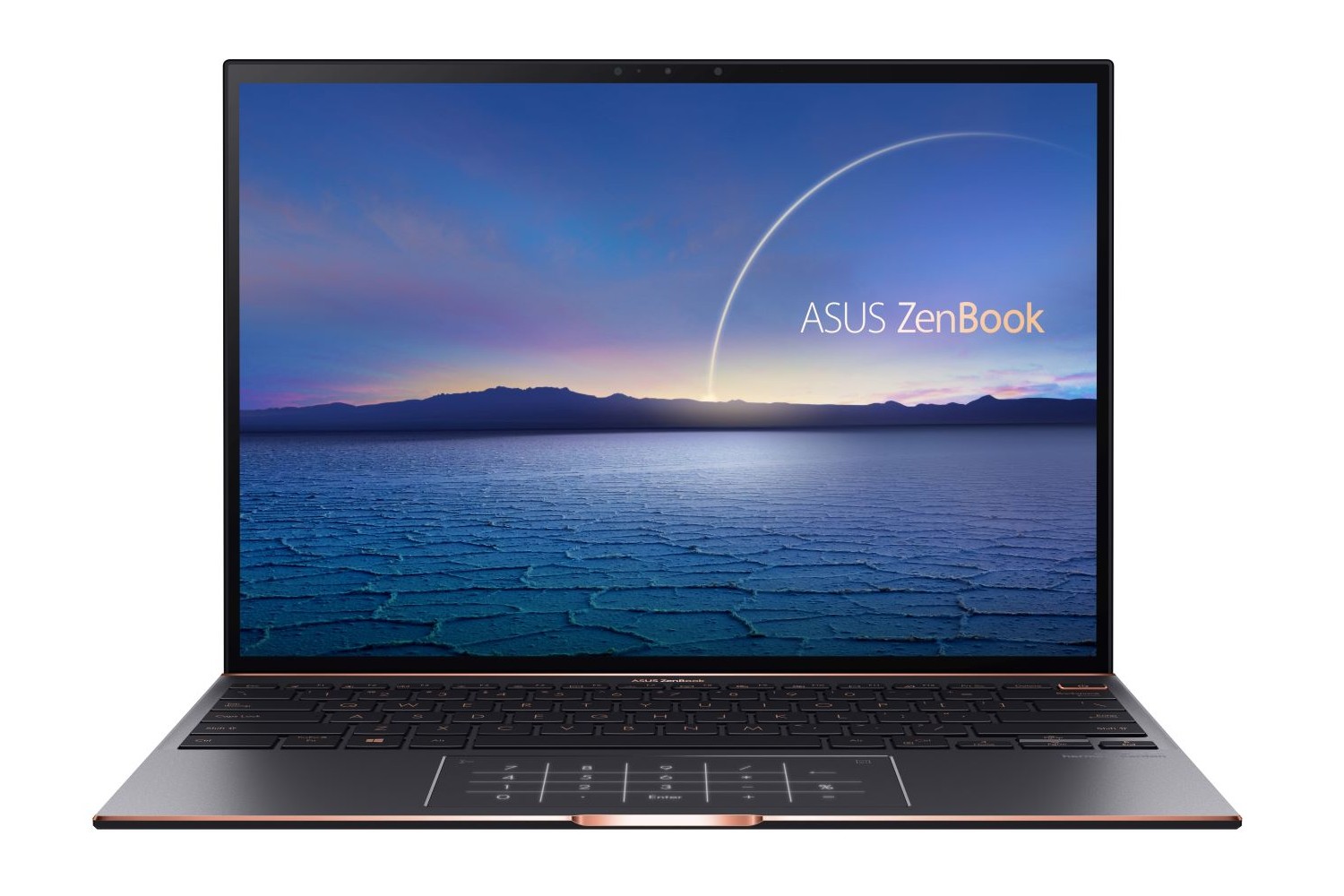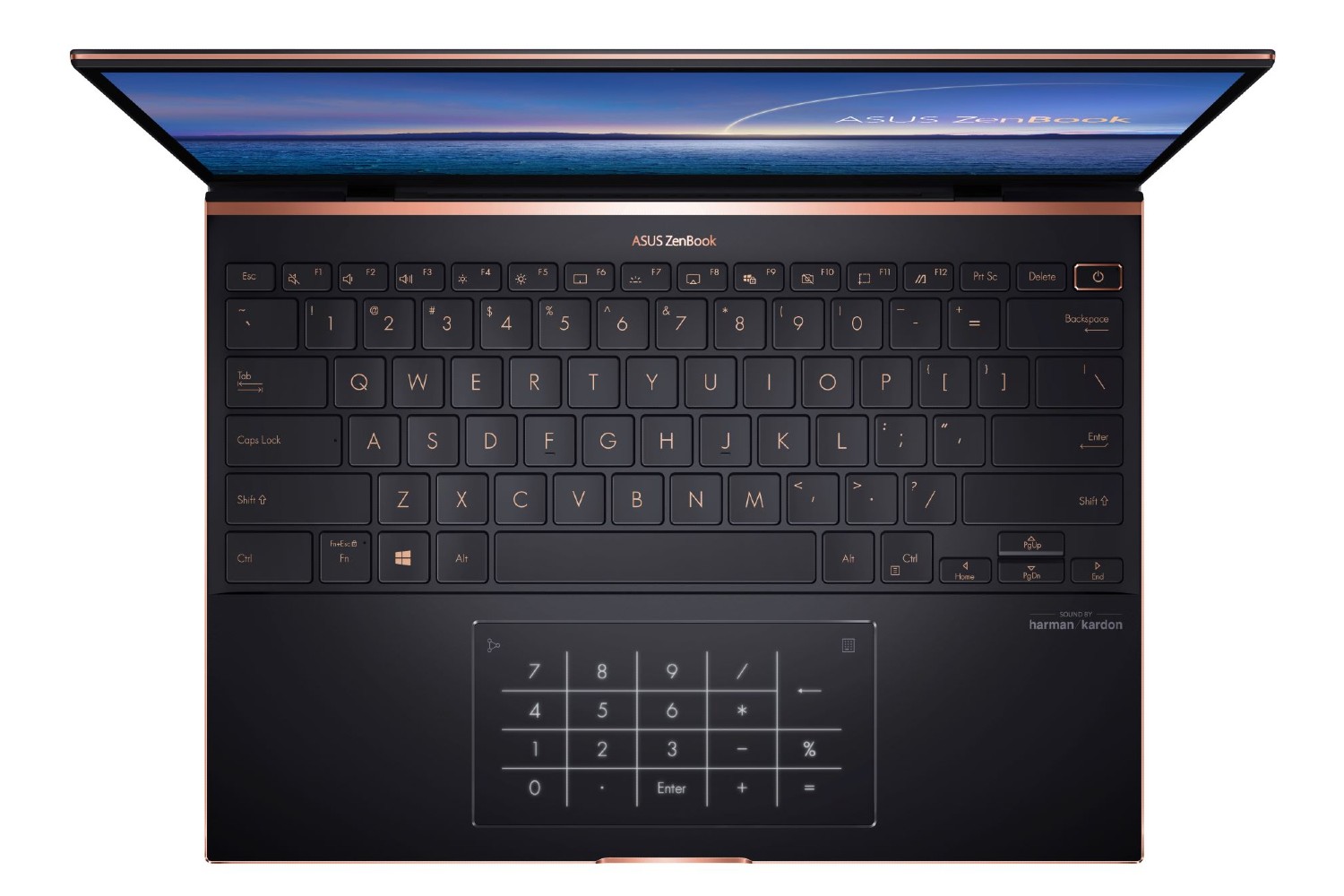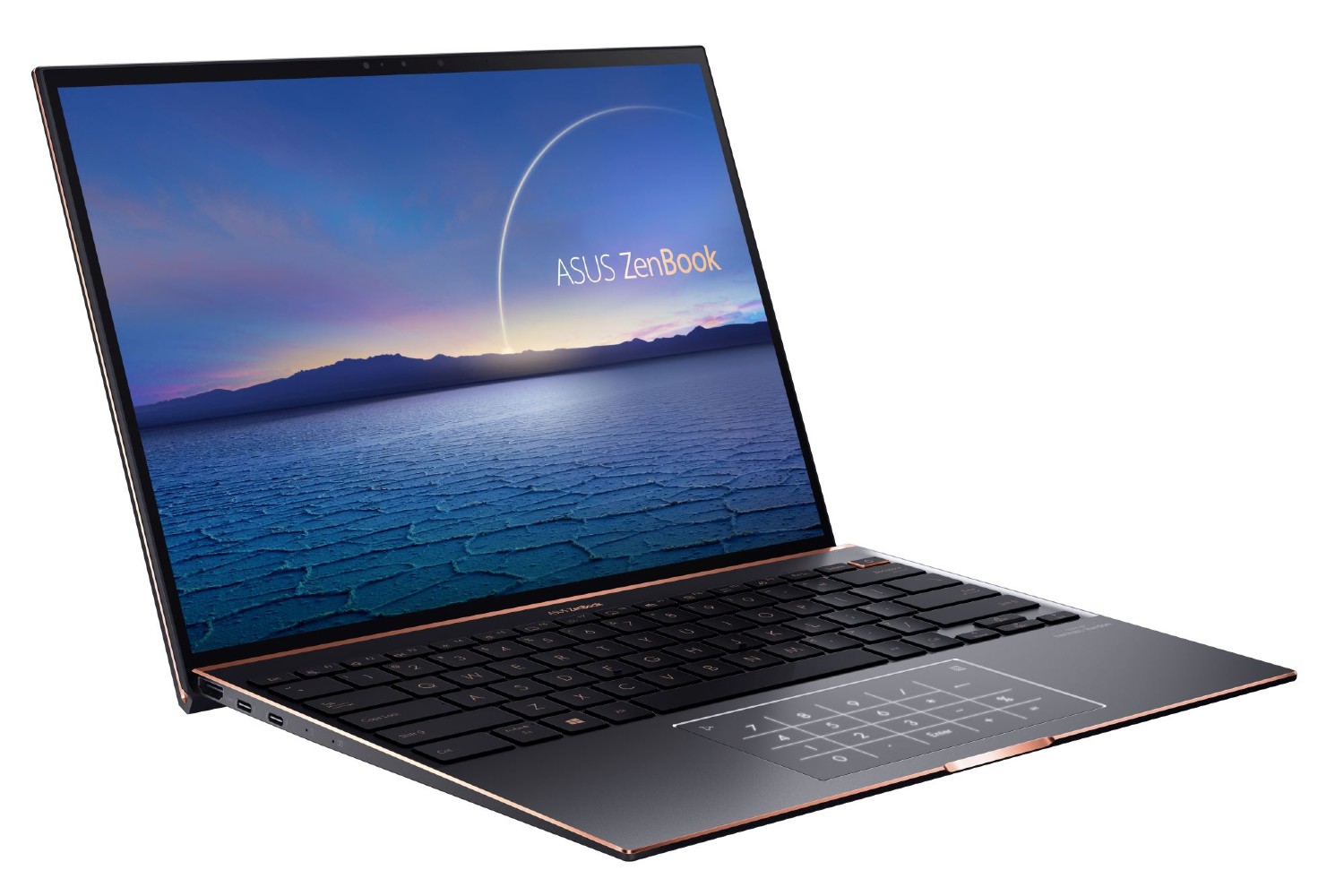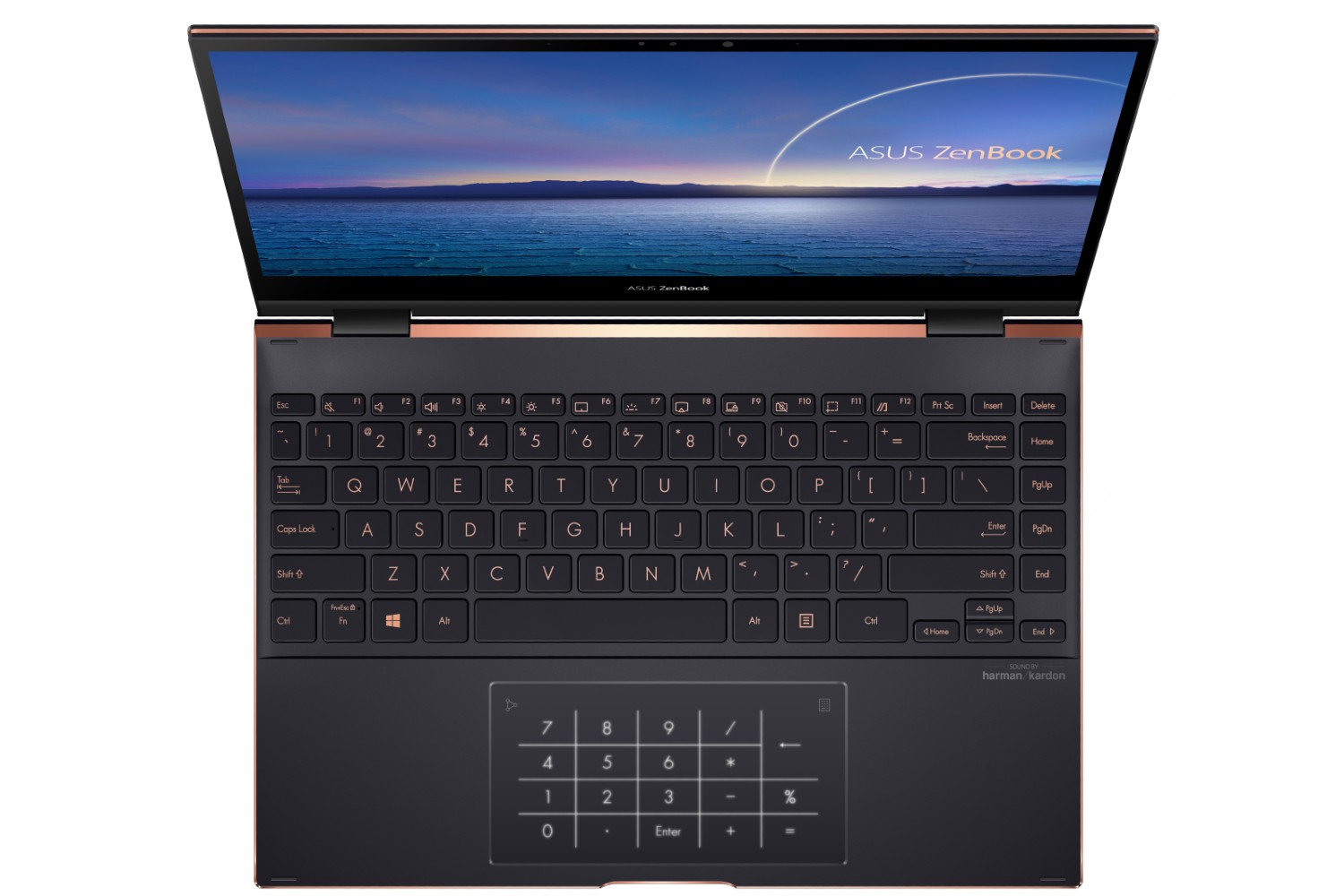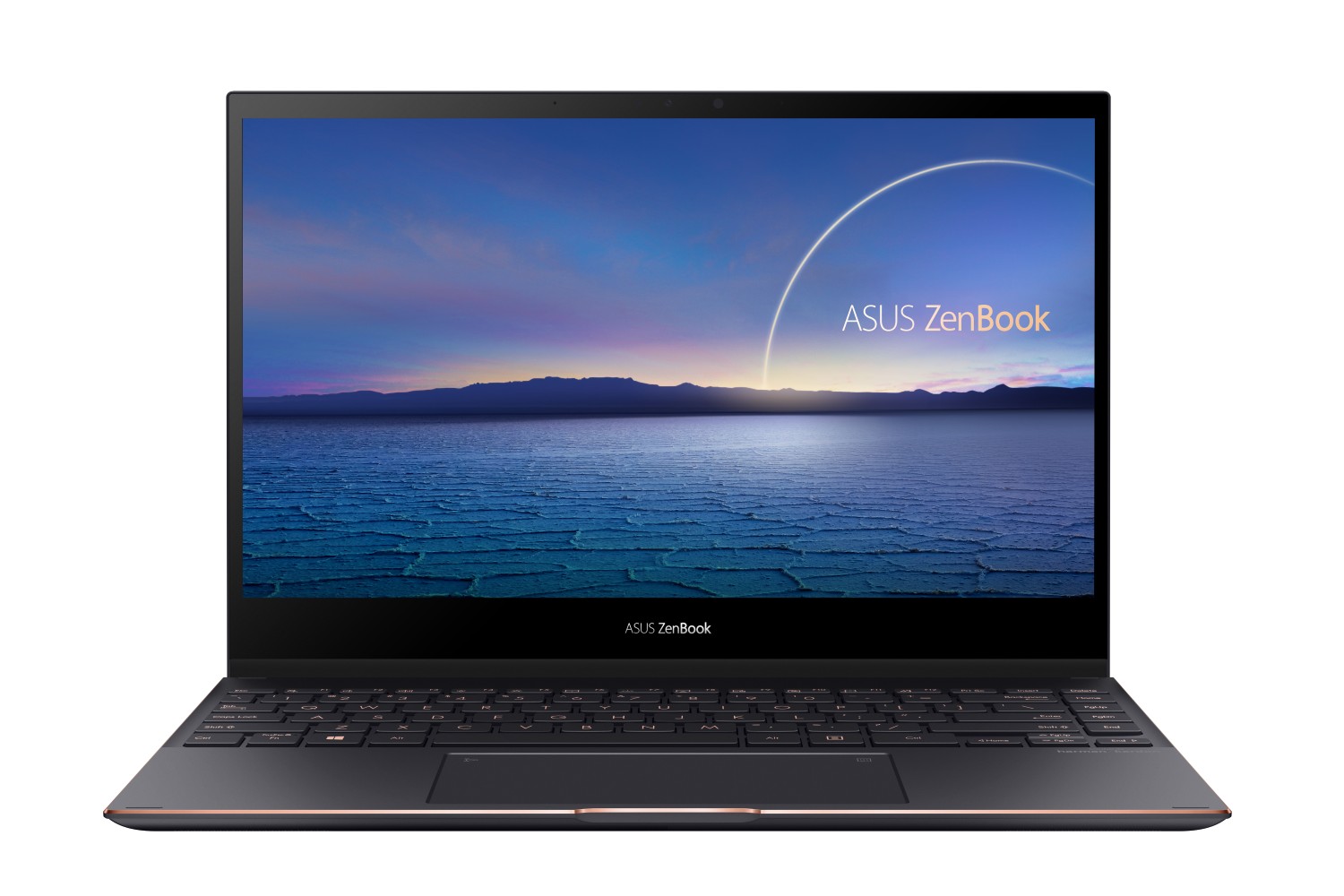Coinciding with Intel’s big 11th-generation Tiger Lake announcement, Asus has unveiled a sweeping update to its current line of ZenBook laptops.
Not only do these laptops all support Intel’s latest processors, along with the upgraded Intel Xe graphics, they also sport some new features and modern design choices.
Asus ZenBook S (UX393) and ZenBook Flip S (UX371)
The ZenBook S is Asus’ flagship laptop, and it’s getting a big overhaul in 2020. The 13.9-inch screen is now a much taller 3:2 aspect ratio, similar to what you get on the Microsoft Surface Laptop 3. This is technically less pixel-dense than 4K, with a native resolution of 3,300 × 2,200. Asus says this screen goes up to 500 nits and is Pantone-calibrated.
The screen itself is also now surrounded by thinner bezels, including a dramatically reduced bottom bezel. Asus now claims it features a 92% screen-to-body ratio. Both of these are changes reminiscent of the recent XPS 13 redesign. Part of that bottom bezel is now also covered by the lifted keyboard, thanks to the heightened ErgoLift hinge, which raises the keyboard up at what Asus calls “an optimum typing level.”
To match that small screen bezel, the keyboard now also has an edge-to-edge design, making room for larger keycaps and less wasted space.
Asus has also trimmed down the overall size of the laptop. It’s now just 0.62 inches thick and 2.97 pounds. The design feels and looks a bit more premium, sporting diamond-cut edges and gold trim all around.
The ZenBook Flip S is the 2-in-1 variant, meaning it features a 360-degree hinge and touch-enabled screen. The Flip S features a lot of the same design changes, such as the gold trim and larger keyboard, but is differentiated in one major way.
The 13-inch screen is a standard 16:9 aspect ratio, and now comes in 4K OLED. In addition, Asus also offers a one-watt panel that Asus says boosts the battery life by up to 25%.
The Flip S is also even thinner and lighter than the ZenBook S at just 2.65 pounds in weight and 0.55 inches in thickness.
Of course, the ZenBook S and ZenBook Flip S both use 11th-gen Intel U-series processors, which brings both Thunderbolt 4 support, Wi-Fi 6, and Intel Xe integrated graphics.
In addition to Thunderbolt, the ZenBook S and ZenBook Flip S do have a USB-A port and HDMI — but not a headphone jack. That’s right, these laptops don’t include a headphone jack. Asus says it conducted surveys with customers and found that USB-A and HDMI were higher priorities.
Asus did not announce pricing or availability for the new ZenBook S or ZenBook Flip S. It should be noted, though, that company only recently launched the 10th-gen ZenBook S, which the same design and features, just with older processors.
Asus ZenBook 14 UX435 and ZenBook Pro 15 (UX535)

Asus has also announced updated versions of its ZenBook 14 and ZenBook Pro 15. They both have the same 92% screen-to-body ratio as the ZenBook S, the elevated ErgoLift hinge, and a larger touchpad.
The stand-out feature is the ScreenPad 2.0, a 5.65-inch displays that replaces your traditional touchpad. It’s a bit larger this time around and also features updated software. Asus calls it “ScreenXpert 2.0,” and says it functions a bit more like a smartphone. Of course, you can also use the ScreenPad as a second screen.
Like the ZenBook S, Asus has cut some fat off these two laptops. The ZenBook 14 weighs 2.62 pounds and is 0.67 inches thick, while the ZenBook Pro 15 weighs 3.97 pounds and is 0.70 inches thick.
Of course, the ZenBook Pro 15 is not just larger, it’s also considerably more powerful. It uses a 10th-gen H-series processor, up to Core i7. It also features a discrete Nvidia GTX 1650 Ti. The ZenBook 14, meanwhile, uses the newer 11th-gen Tiger Lake processors.
Both laptops include a USB-A 3.2 Gen 1 port, a standard HDMI port, and a headphone jack. The ZenBook Pro 15 includes a full-sized SD card slot and a Thunderbolt 3 port, while the ZenBook 14 includes the newer
Asus did not announce pricing or availability for the newer ZenBook 14 and ZenBook Pro 15.
